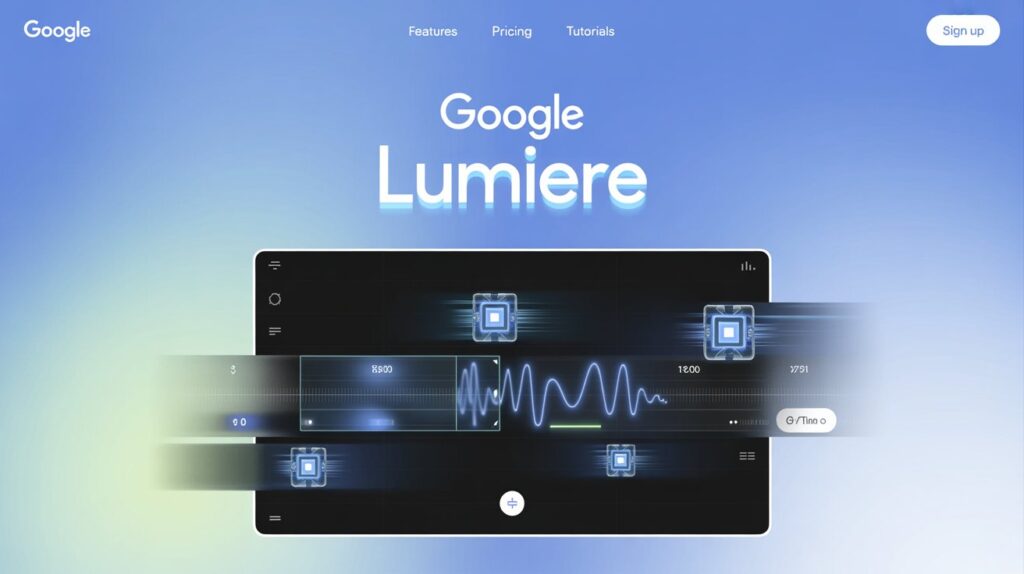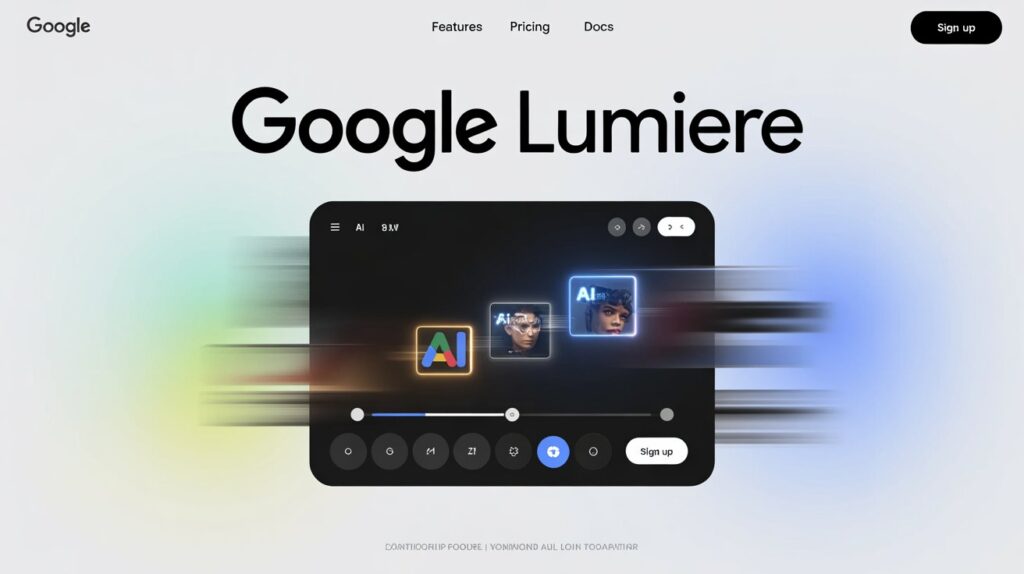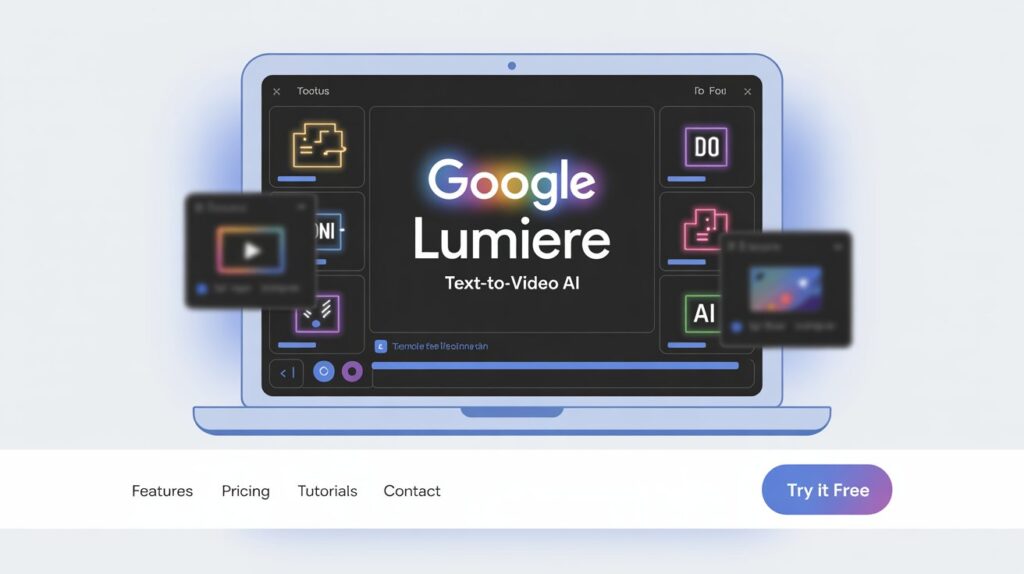Imagine typing a sentence and watching it turn into a video. Sounds like science fiction, right? Well, that’s exactly what Google Lumiere is aiming to do—and it’s no longer just an idea.
Detailed Biography Table for “Google Lumiere”:
| Attribute | Details |
|---|---|
| Name | Google Lumiere |
| Developed by | Google DeepMind |
| Launched in | January 2024 (Research Paper Released) |
| Technology Type | AI-Powered Text-to-Video Generator |
| Core Model | Space-Time U-Net (STUNet) |
| Purpose | Generate realistic, temporally consistent videos from text prompts |
| Resolution Output | Up to 1024×1024 pixels, 5-second clips |
| Frame Rate | 16 frames per second (fps) |
| Input Requirement | Natural language prompt or image+text |
| Key Features | • One-shot video generation • High temporal consistency • Multi-view rendering |
| Competitors | Runway Gen-2, Pika Labs, Sora by OpenAI, Synthesia |
| Strengths | • High realism • Smooth motion • Fast inference time |
| Applications | • Marketing & Advertising • Content Creation • Entertainment • Education & Training |
| Release Status | Research-only (not public yet) |
| Current Limitation | Clip duration limited to 5 seconds Not available for public use |
| Video Quality | Consistently realistic with natural object motion and interaction |
| User Interface | Currently showcased in research format, no public interface yet |
| Ethical Considerations | Bias, misinformation risk, deepfake potential |
| Security | AI-generated watermarking likely under research |
| Official Source | https://deepmind.google/technologies/lumiere/ |
| Research Paper | “Lumiere: A Space-Time Diffusion Model for Video Generation” |
What is Google Lumiere?
Google Lumiere is a revolutionary text-to-video AI model created by Google Research. It’s designed to convert simple text prompts into short, realistic videos using cutting-edge machine learning architecture called Space-Time U-Net.
But how does it actually work?
Great question! At its core, Google Lumiere uses a diffusion model that understands motion over time and space. Instead of creating random video frames and stitching them together, it creates coherent, continuous motion—which makes the video feel natural and lifelike.

Why is Google Lumiere a Big Deal?
Because it’s not just another AI video generator. It’s different—and better—in several key ways:
- Realistic Motion: Thanks to the Space-Time U-Net, Lumiere understands how things move in both space and time.
- High Quality: Generates up to 80 frames at 16 fps, upscaled to a crisp 1024×1024 resolution.
- Versatile Capabilities: It supports text-to-video, image-to-video, stylization, and video inpainting.
Wait, what can it actually do?
Let’s break it down with a few examples:
- You type: “A dog chasing a butterfly through a sunlit meadow.” Lumiere gives you a 5-second cinematic video.
- You upload a static image, and Lumiere brings it to life.
- You stylize your existing footage using different visual effects.
In short, Google Lumiere is about turning ideas into moving visuals—instantly.
Is Google Lumiere Available to Use Right Now?
Here’s the kicker: Not yet.
As of now (2025), Google Lumiere is still in the research phase. It was officially announced in January 2024, and the research paper was released around the same time. However, there’s no public release, no demo access, and no free trial.
So when can you actually use it?
That’s the million-dollar question. Google hasn’t revealed an official release date yet. But if history is any indicator, a limited rollout or integration into tools like Google Photos, YouTube, or even Gemini AI could happen sooner than we expect.
How Does Google Lumiere Compare to Competitors?
Let’s put Lumiere up against the big names like Runway Gen-2, OpenAI’s Sora, and Pika Labs:
| Feature | Google Lumiere | Runway Gen-2 | OpenAI Sora | Pika Labs |
|---|---|---|---|---|
| Video Length | 5 seconds | Up to 4 seconds | Up to 60 seconds | ~3-4 seconds |
| Motion Quality | High (Space-Time U-Net) | Medium | High | Medium |
| Resolution | 1024×1024 (Upscaled) | 720p | 1080p | 720p |
| Capabilities | Text-to-Video, Stylization, Inpainting | Text/Image-to-Video | Text-to-Video | Text-to-Video |
While OpenAI’s Sora may offer longer videos, Google Lumiere wins in motion coherence and realism.

What Makes the Space-Time U-Net Special?
This is the secret sauce.
Unlike traditional models that build frames one-by-one, Space-Time U-Net works on the whole video timeline. It predicts both space (what’s in the frame) and time (how things move) simultaneously.
That means more fluid motion, fewer glitches, and higher realism.
What’s the Buzz Around Google Lumiere?
Since its reveal, Google Lumiere has been making waves across:
- Tech blogs like TechRadar, Freethink, and Technowize
- AI communities on Reddit and Twitter
- Academic circles citing its research paper on arXiv
The buzz is driven by one core idea: this might be the most promising text-to-video model yet.
So Why Isn’t It Public Yet?
One word: Ethics.
Realistic AI videos are a double-edged sword. On one hand, they could revolutionize filmmaking, marketing, and education. On the other, they open doors for deepfakes and misinformation.
Google seems to be treading carefully to avoid misuse—developing internal safety mechanisms before public release.
Real-World Applications of Google Lumiere
When it does go public, expect it to shake up:
- Marketing: Auto-generate product commercials from text.
- Education: Visualize historical events, science experiments, and more.
- Entertainment: Bring stories and characters to life for indie creators.
- Social Media: Create instant, eye-catching videos for content marketing.
The possibilities are endless—and deeply exciting.
What Are People Asking About Google Lumiere?
Let’s answer some of the top trending questions:
Is Google Lumiere AI free to use?
Not yet. No pricing has been announced.
How to use Google Lumiere?
Right now, you can’t—unless you’re a Google researcher. But future access may come via integrations in Google products or APIs.
Where can I see examples of Google Lumiere in action?
You can find demo clips and research videos on Google Research blog, AI Bites, and YouTube tech channels.

What Should You Do While You Wait?
Prepare.
Start exploring other AI video tools like Runway, Pika, and Kaiber AI. Understand how prompts work, experiment with short-form video creation, and keep tabs on new releases.
When Google Lumiere finally arrives, you’ll be ready to take full advantage.
Final Thoughts: Is Google Lumiere the Future?
In many ways, yes.
Google Lumiere represents a huge leap forward in generative AI. Its ability to create visually coherent, emotionally engaging videos from just a prompt is nothing short of revolutionary.
But like all breakthroughs, it comes with responsibilities. As creators, marketers, educators, and technologists, we need to use it wisely.
The age of instant cinematic storytelling is coming. The only question left is: Are you ready for it?
Stay tuned. Stay curious. And keep your eyes on Google Lumiere.




